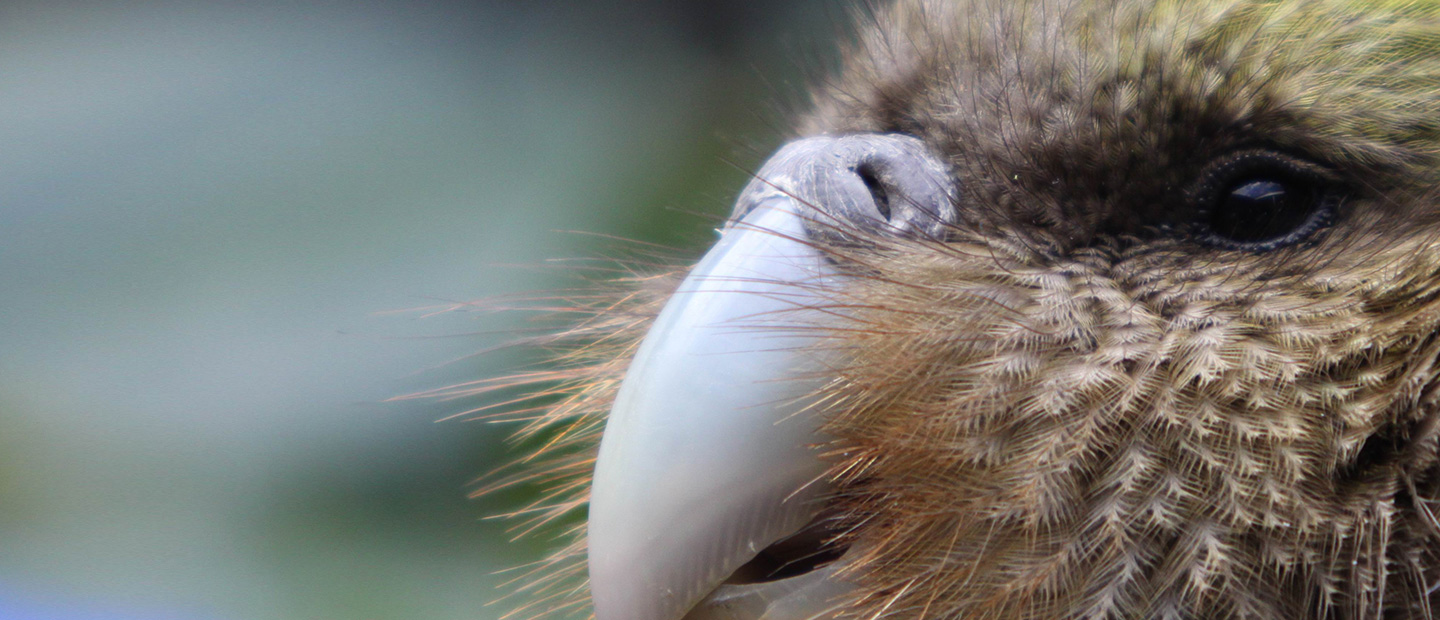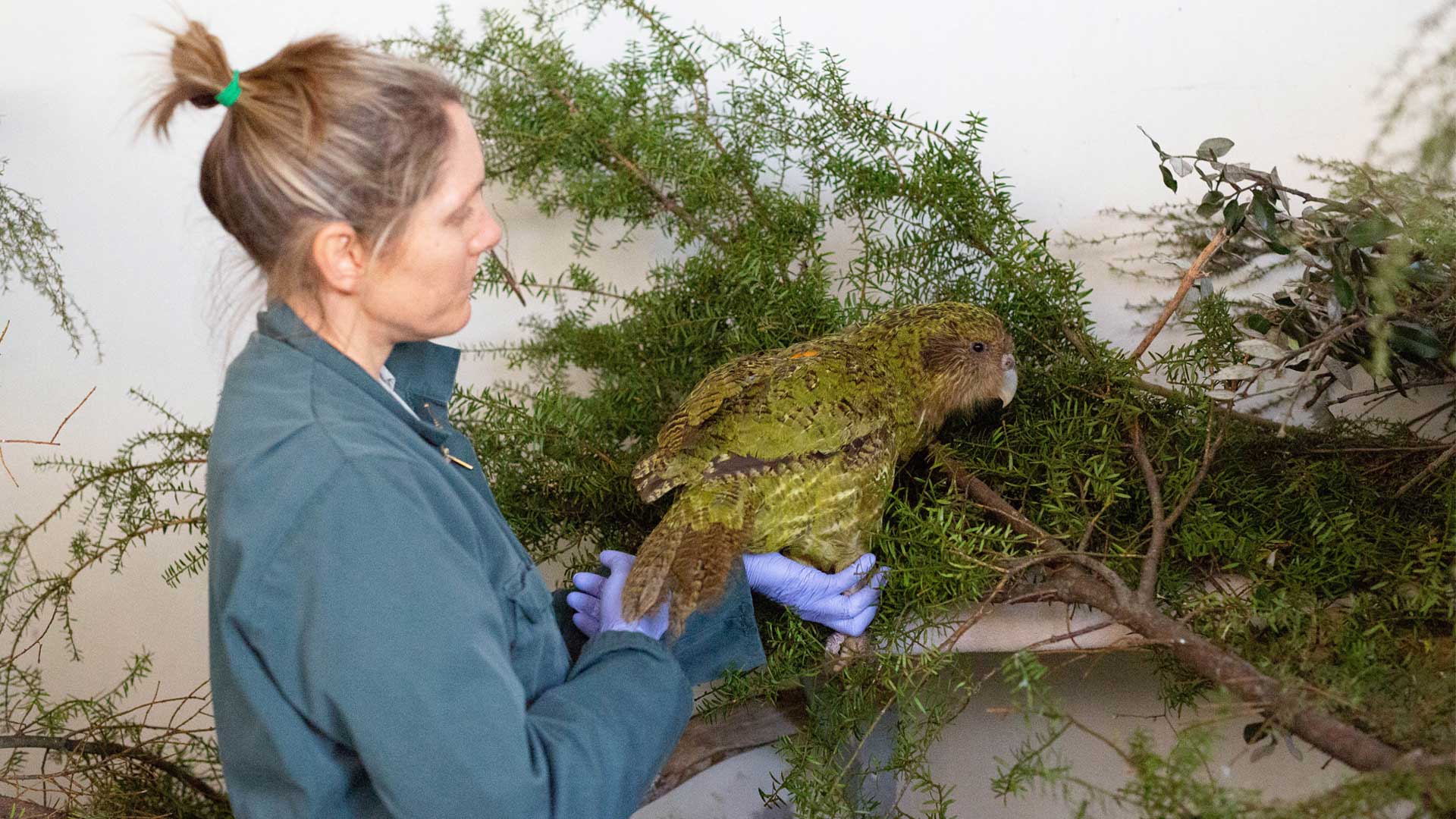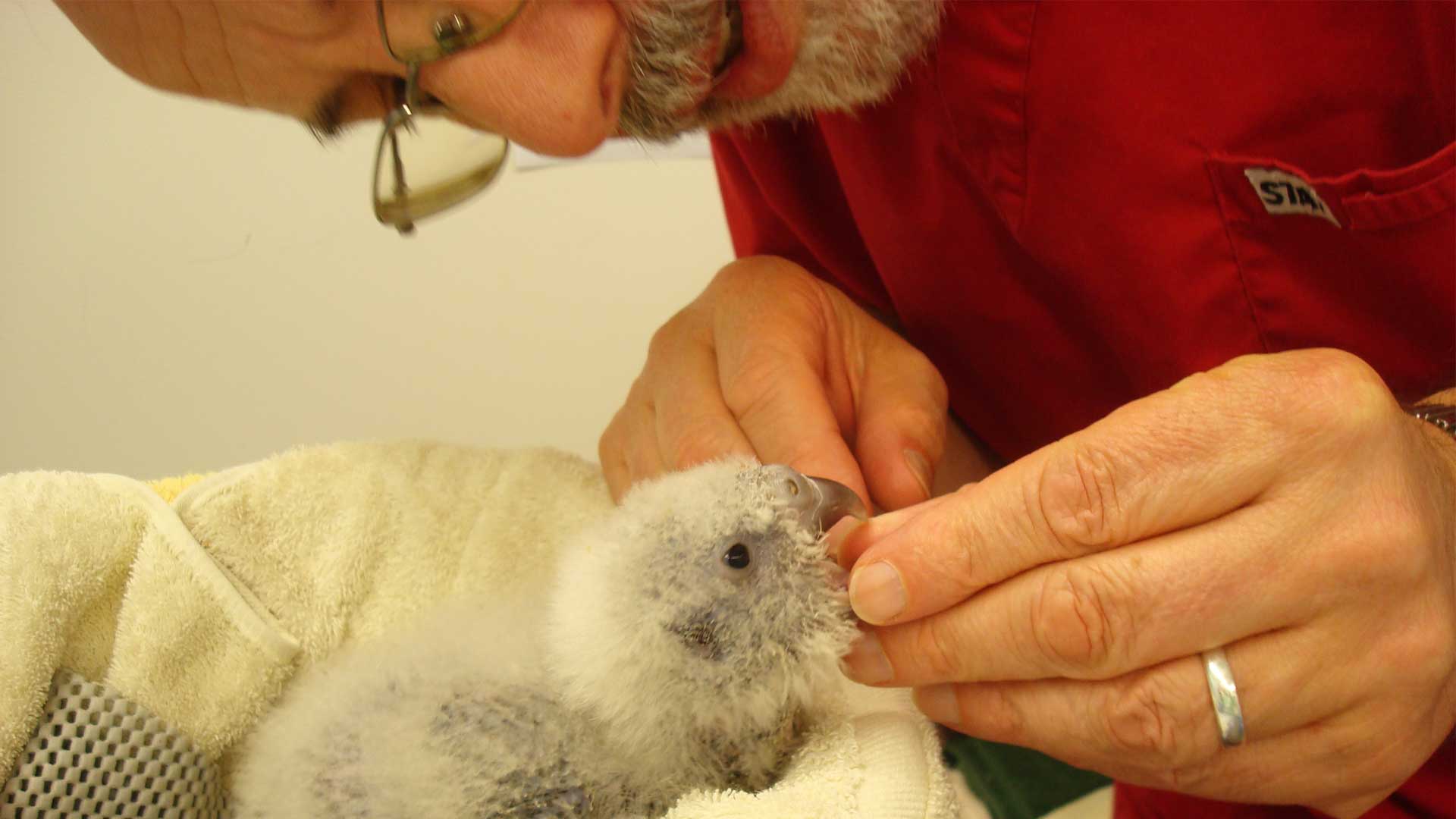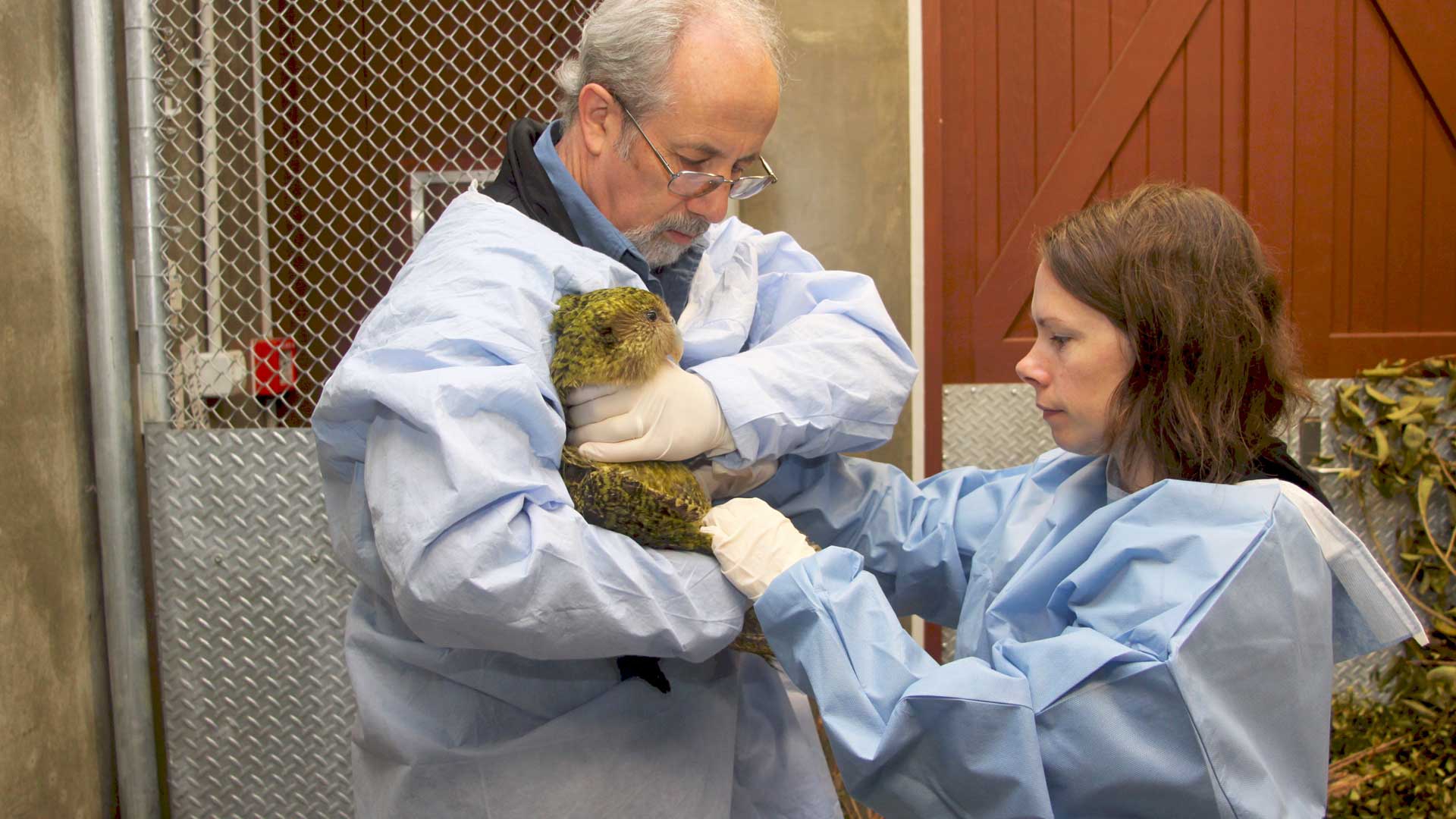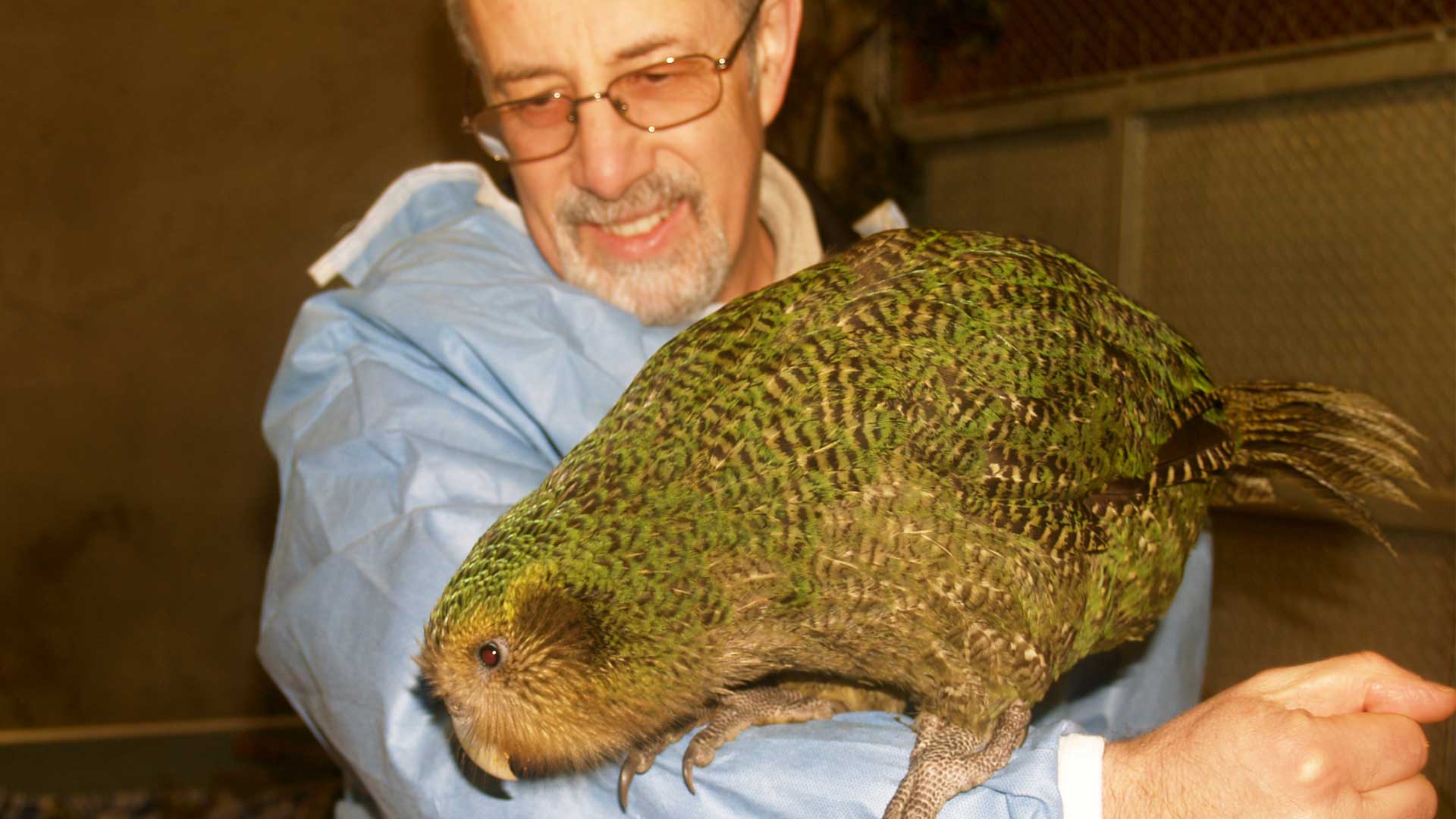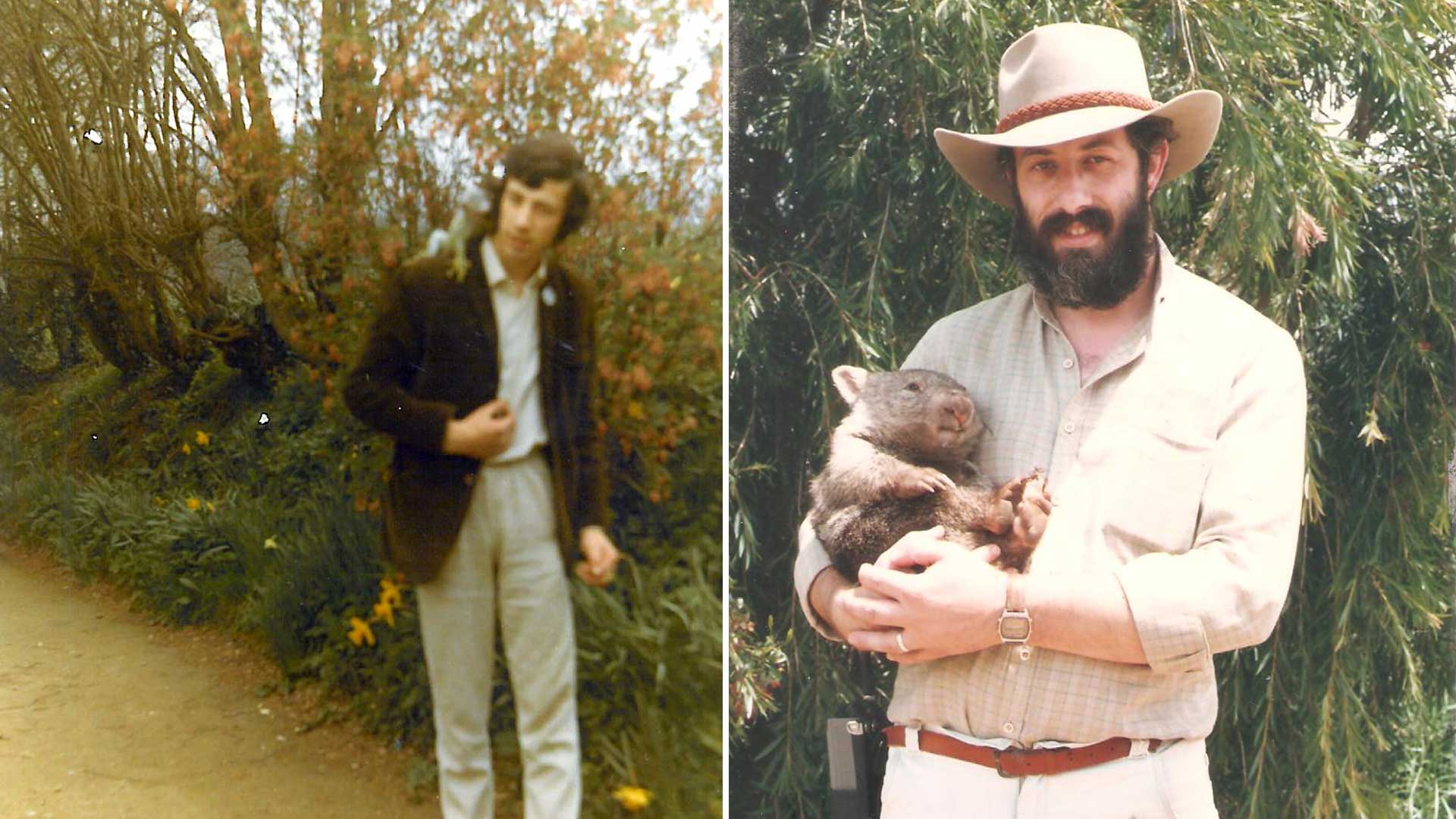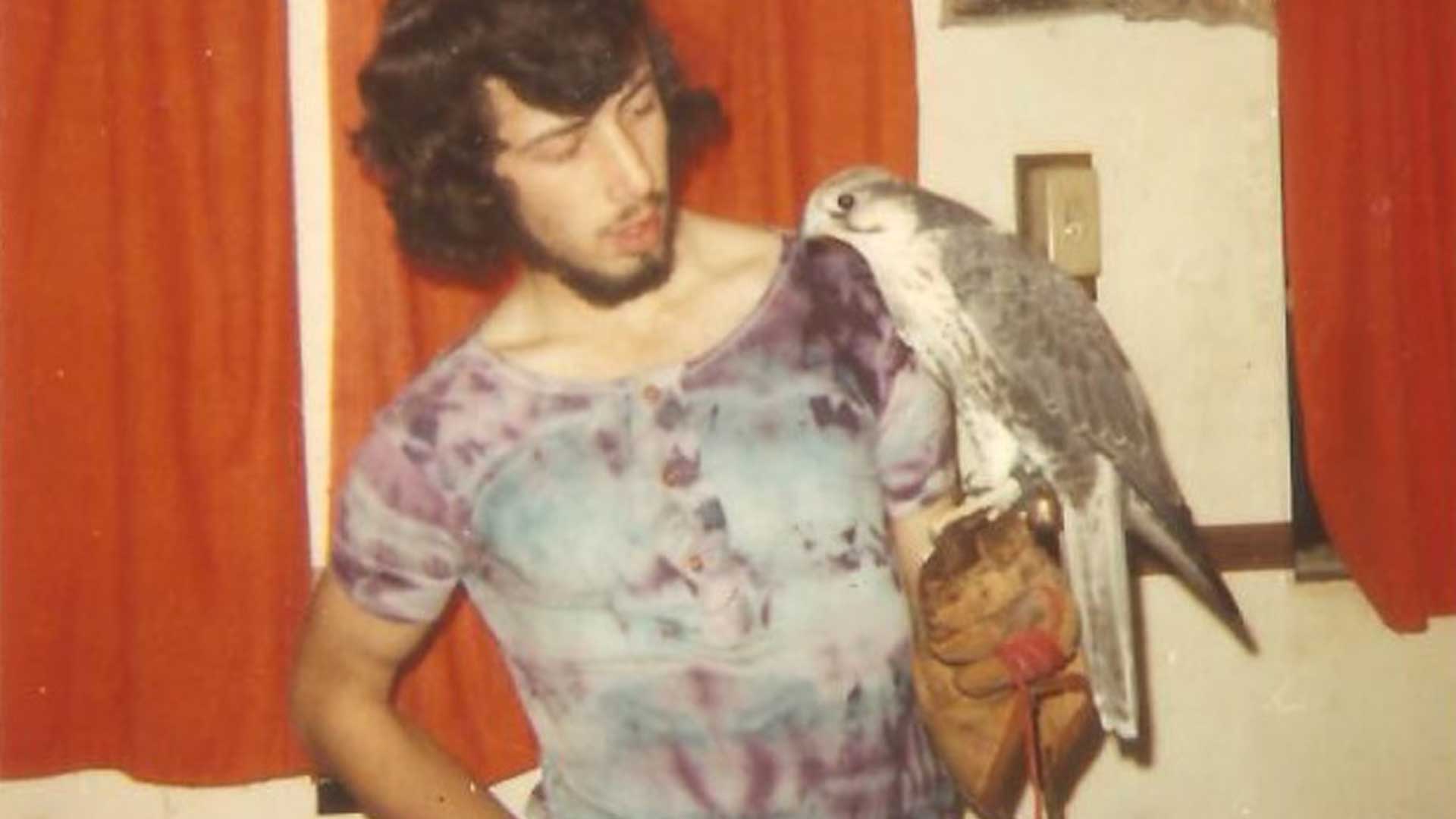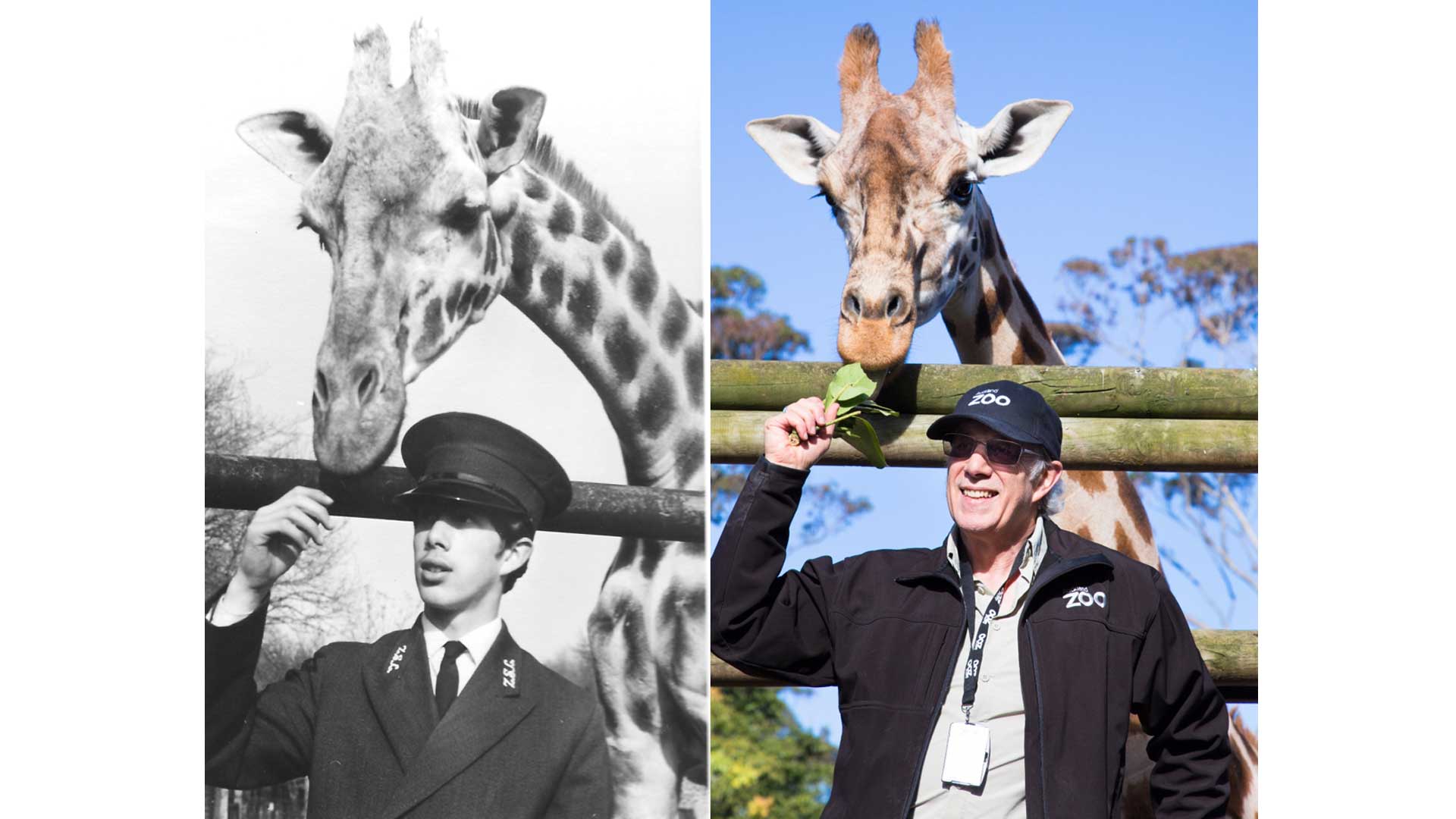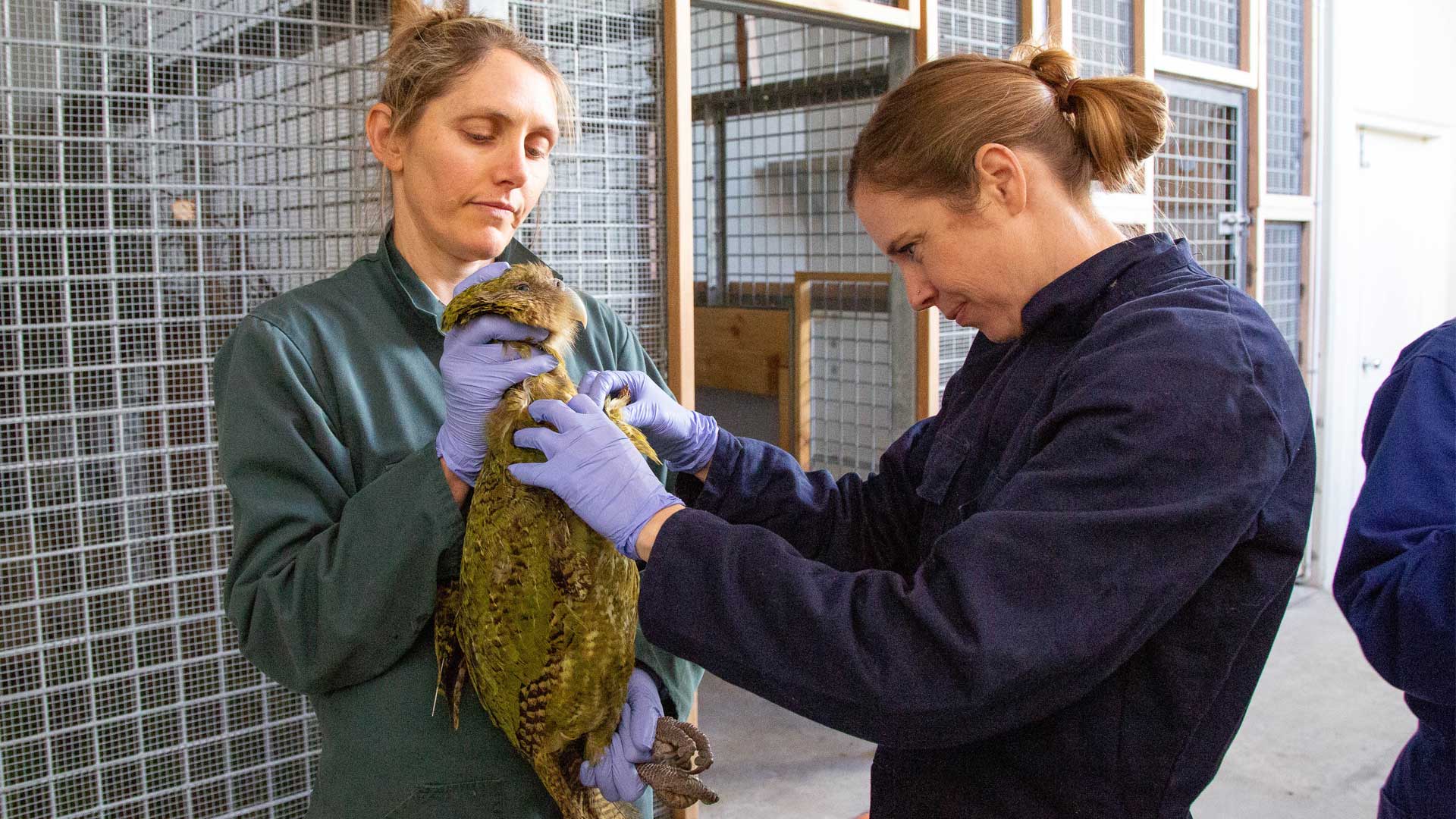Richard explains that he became involved in wildlife research because “we know so much about domestic animals, but we know so little about wild animals, and I was absolutely thirsty for knowledge.”
Richard met his first kākāpō – Hoki – in 1990, when Auckland Zoo became the first place in the world to hatch a kākāpō in captivity. Before the young chick was sent to a predator-free island, Richard was involved in hand-rearing, and when they were reunited for a health check, the kākāpō remembered Richard and played with his shoelaces! When asked about his love for kākāpō, Richard puts his hand on his heart, and expresses how gorgeous, talented, curious, and sometimes mischievous they are.
“You can’t help but to love them,” Richard says.
Kākāpō have a condition commonly known as ‘crusty bum’ but clinically referred to as vent dermatitis and cloacitis. This is an infection that causes sores and scabs, and is very painful for the birds, sometimes so much that they stop eating - making it a potentially deadly disease. With only 148 left, every bird is of significant value, and finding out how and why this happens has become one of Richard’s obsessions. Crusty bum is potentially a huge issue because it could stop the birds from breeding, and with such a small population, this adds yet another threat to the survival of the species. Kākāpō excrete waste through one hole – the cloacal – and also use that same hole to lay eggs and mate - making it one very important bottom! Richard and the vet team’s research has taught us how to treat the infection, but the ‘why it happens to some birds and not others’ is still a mystery.


